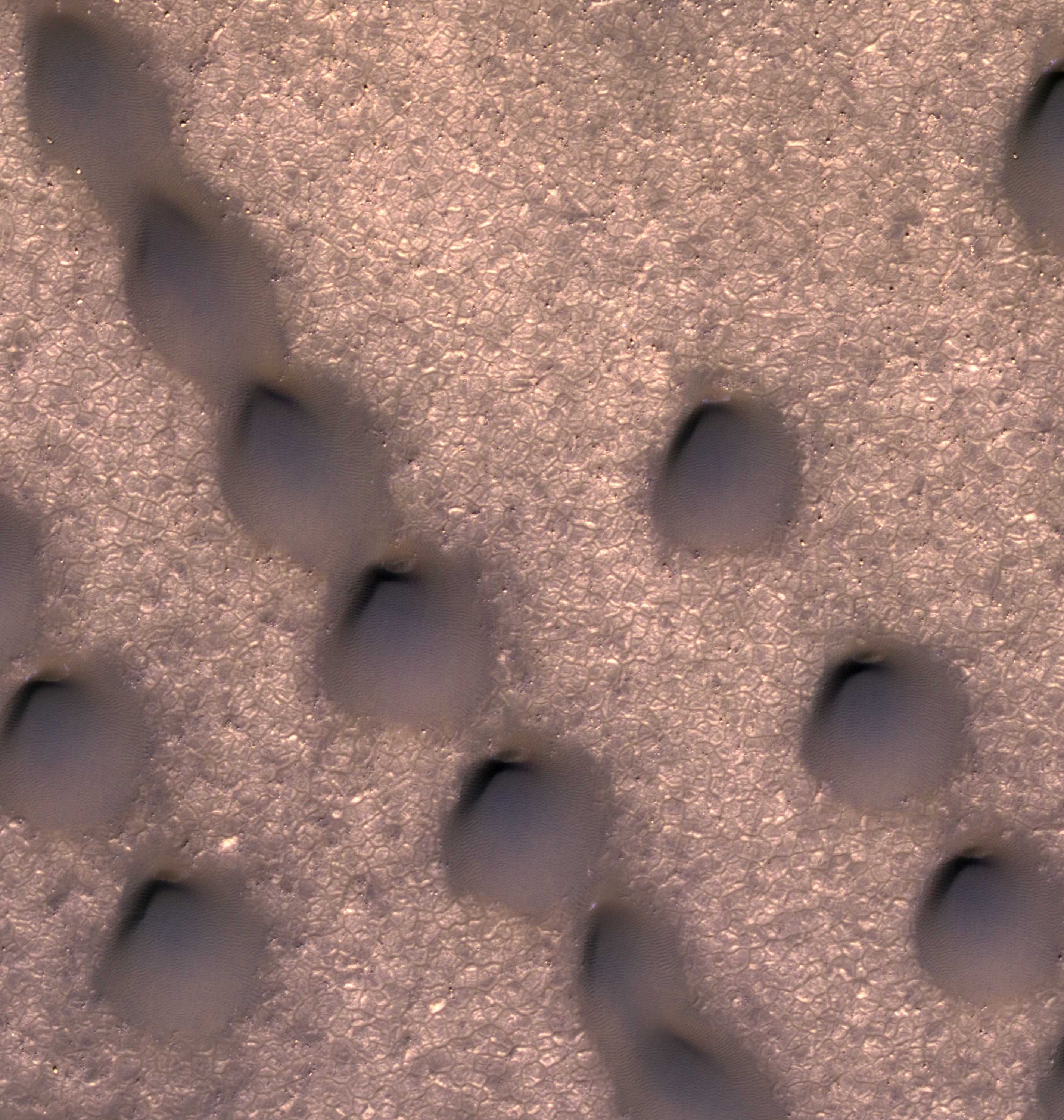Dunes in a row

Ripples of rock
December 4, 2017
The mysterious bright streaks
December 18, 2017
A Piece of Mars: Look at the alignment of the ~100 m dunes in this 713×750 m (0.44×0.47 mi) scene. How do dunes form in such straight lines? And why don’t they always do that? It’s likely that these dunes were once long ridges stretching from the lower right to upper left. The shape of the slip faces suggests they’re formed from two winds that blow from similar directions, both of which push sand toward the upper left. To stay stable, this sort of dune needs a constant influx of sand from upwind (from the lower right), but if that flow of incoming sand lessened, then a long dune would be forced to break up into a series of smaller dunes. That may be what’s happened here. Check out the whole image, and you’ll see other long ridges that haven’t yet broke up into smaller dunes. (HiRISE ESP_052798_2565, NASA/JPL/Univ. of Arizona)




4 Comments
There are many linear dunes extending downwind of the dome dunes. Could they be the result of merge? May be the are lee dunes as the shadow dunes. So, could the dome dunes are frozen? Thank you.
Yes, they are most likely frozen (this image is at 76N, not too far from the north pole). They’re not quite lee dunes, since they don’t extend from an obstacle (like a hill or crater). Dunes tend to extend downwind like this when sand availability is low, which can happen with vegetation (parabolic dunes) or some other cementing agent restricts sand mobility. Here it’s most likely ice that restricts sand mobility. Since the dome dunes are aligned, I suspect they were once linear dunes (like the others in this image) that broke into dome dunes as sand eroded away (as dome and barchan dunes form when sand supply is low). Some of these ideas are published – I can send references if you’d like, let me know.
When you zoom in on the dunes many of them appear to have a sort of vertical crater at their ‘northern’ tip. These craters look pretty similar to each other and a couple of them appear to give off some sort of light refraction. If my breakdown of the scale is near the mark, all these craters seem to be about 10m across. Any ideas asa to what may have caused this interesting phenomenon?
I’m not sure what you mean by a vertical crater? Also these are dunes, not craters. They’re more than 10 m across, closer to 100 m across.